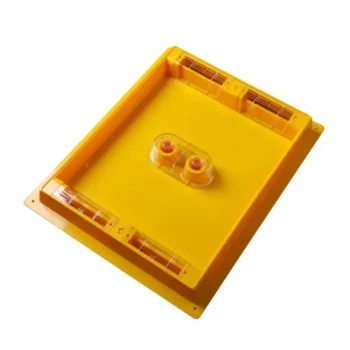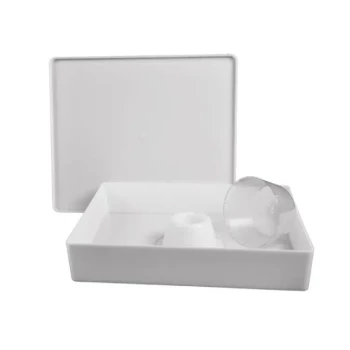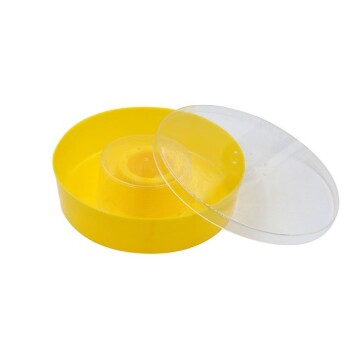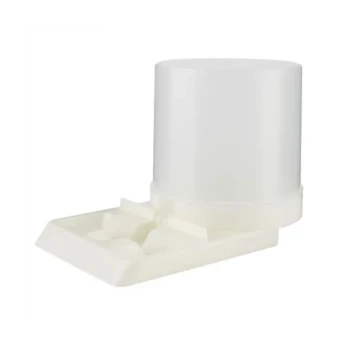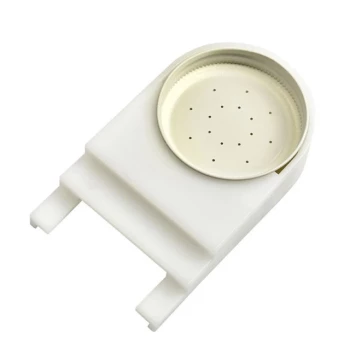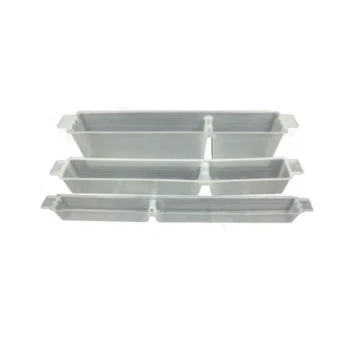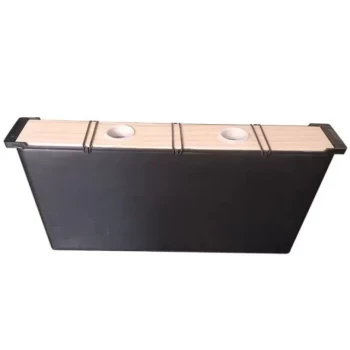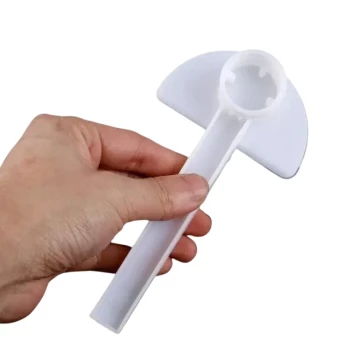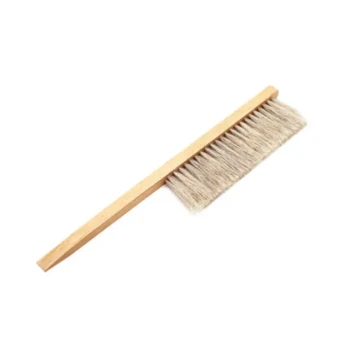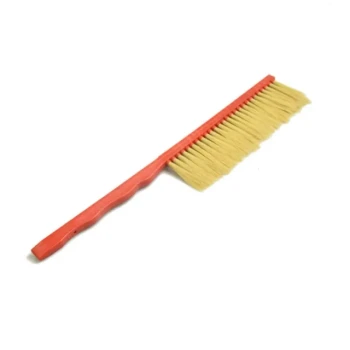In short, no. You do not use a traditional inner cover underneath a hive top feeder. The feeder is designed to sit directly on the uppermost hive box, allowing bees to access the syrup from below. Placing an inner cover between the hive box and the feeder would block their access and defeat the feeder's purpose.
The question isn't whether you need an inner cover at all, but when to use it. A hive top feeder temporarily replaces the inner cover during feeding periods. The inner cover remains an essential piece of equipment for proper ventilation and hive management when you are not actively feeding.
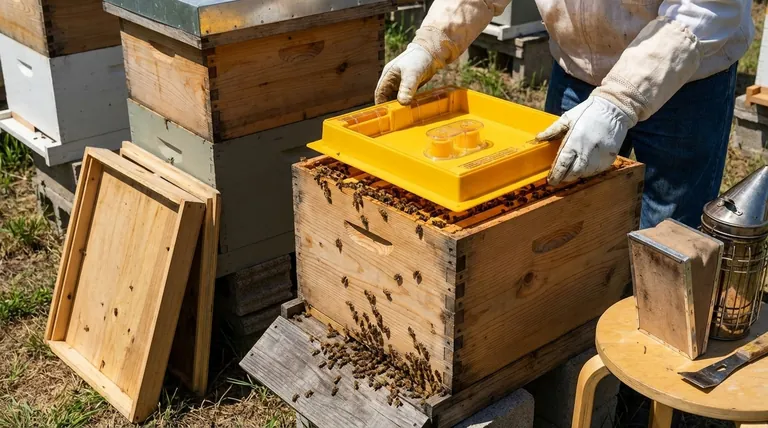
Understanding the Role of Each Component
To configure your hive correctly, you must understand the specific job of each piece of equipment. They are designed to work together in a modular system, but not all at once.
The Hive Top Feeder's Function
A hive top feeder is essentially a basin for sugar syrup that sits on top of your hive. It has a central opening or side channels that allow bees to climb up from the brood chamber below and drink without leaving the hive or drowning.
Its placement is critical: directly on the top edges of the uppermost hive box.
The Inner Cover's Function
The inner cover is a simple but crucial component for standard hive operation. Its primary jobs are to prevent bees from gluing the outer lid shut with propolis and to provide an insulating air gap.
This air space helps with moisture control and temperature regulation. Many inner covers also feature a notched rim, which can be used to provide the colony with upper ventilation or an alternative entrance/exit.
Why They Don't Work Together
A hive top feeder and an inner cover serve mutually exclusive functions at the same time. You use one or the other, but not both simultaneously in the stack.
If you place an inner cover on the hive first, its solid surface will prevent the bees from ever reaching the syrup in the feeder you place above it.
Correct Hive Configuration: With vs. Without the Feeder
The mistake isn't owning an inner cover; it's using it at the wrong time. Your hive configuration changes based on whether you are actively feeding.
Configuration When Feeding
When a hive top feeder is in use, you temporarily set your inner cover aside. The correct stack, from the bottom up, is:
- Bottom Board
- Hive Bodies (Brood boxes and/or Honey Supers)
- Hive Top Feeder
- Telescoping Outer Cover
Configuration When Not Feeding (Standard Operation)
For the vast majority of the year when you are not feeding, the inner cover is essential. The standard configuration is:
- Bottom Board
- Hive Bodies (Brood boxes and/or Honey Supers)
- Inner Cover
- Telescoping Outer Cover
The Risk of Omitting the Inner Cover Permanently
Some advice suggests the inner cover is unnecessary altogether. This is a misunderstanding of its function and can lead to significant problems.
The Propolis Problem
Without the "bee space" created by an inner cover, the bees will seal the gap between the top of the frames and the outer cover with a thick layer of propolis (bee glue).
This makes removing the lid extremely difficult. You will have to pry it off with significant force, which can damage your equipment, disrupt the colony, and make hive inspections a frustrating ordeal.
Loss of Insulation and Ventilation
The dead air space provided by the inner cover is a key part of the hive's climate control system. It provides insulation from extreme heat and cold.
Removing it permanently forces the colony to work harder to maintain a stable internal temperature and can lead to moisture buildup and condensation, especially during winter.
How to Apply This to Your Hive
Your hive setup should adapt to your immediate goal for the colony.
- If your primary focus is feeding your colony: Remove the inner cover and place the hive top feeder directly on the top hive body, followed by the outer cover.
- If your primary focus is standard hive operation and health: Use the inner cover. Place it between the top hive body and the outer cover to ensure proper bee space, ventilation, and ease of access.
Think of the hive top feeder as a specialized tool you use for a specific task, while the inner cover is a fundamental part of the hive's permanent structure.
Summary Table:
| Hive Component | Purpose | When to Use |
|---|---|---|
| Hive Top Feeder | Holds sugar syrup for bees to access from below. | During active feeding periods. |
| Inner Cover | Provides bee space, insulation, and ventilation. | For standard hive operation when not feeding. |
| Correct Setup (Feeding) | Bottom Board → Hive Bodies → Feeder → Outer Cover. | Temporarily replaces the inner cover. |
| Correct Setup (Standard) | Bottom Board → Hive Bodies → Inner Cover → Outer Cover. | The standard, permanent configuration. |
Ensure your apiary is equipped for success. Proper hive management is key to colony health and honey production. HONESTBEE supplies commercial apiaries and beekeeping equipment distributors with the durable, reliable supplies needed for efficient operations—from hive top feeders to inner covers and more.
Let's discuss your wholesale needs. Contact our team today to get the right equipment for your beekeeping goals.
Visual Guide

Related Products
- Professional Hive Top Bee Feeder for Beekeeping
- HONESTBEE Professional Hive Top Bee Feeder Feeding Solution
- HONESTBEE Round Hive Top Bee Feeder for Syrup
- Boardman Entrance Bee Feeder Durable Galvanized Steel and Wood Construction for Beekeeping
- HONESTBEE Entrance Bee Feeder Professional Hive Nutrition Solution for Beekeeping
People Also Ask
- What types of hive boxes is the round hive top feeder compatible with? Universal Fit for 8 & 10-Frame Langstroth Hives
- What is the best bee feeder for a hive? Choose the Right Feeder for Your Apiary's Scale
- What are the advantages of using top feeders for bees? Maximize Feeding Efficiency & Colony Safety
- What is a top feeder for bees? Maximize Colony Health with Efficient Feeding
- What are the features of top feeders for bees? Maximize Hive Health with Safe, High-Capacity Feeding
